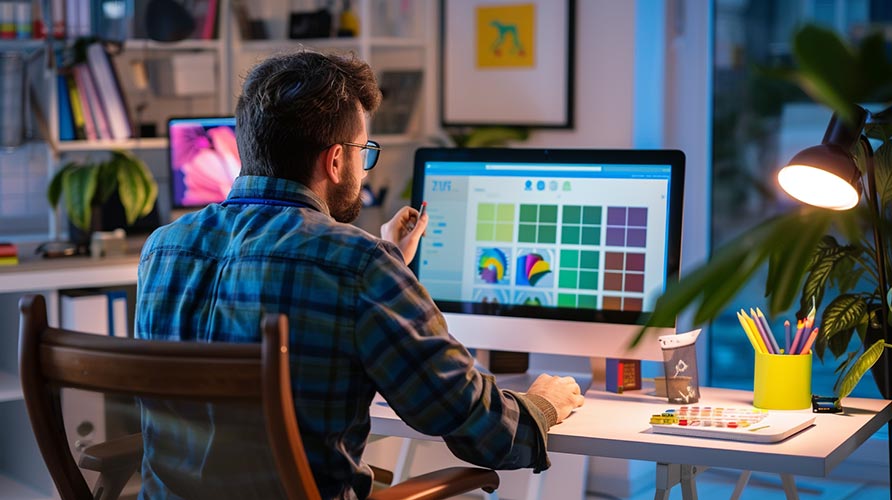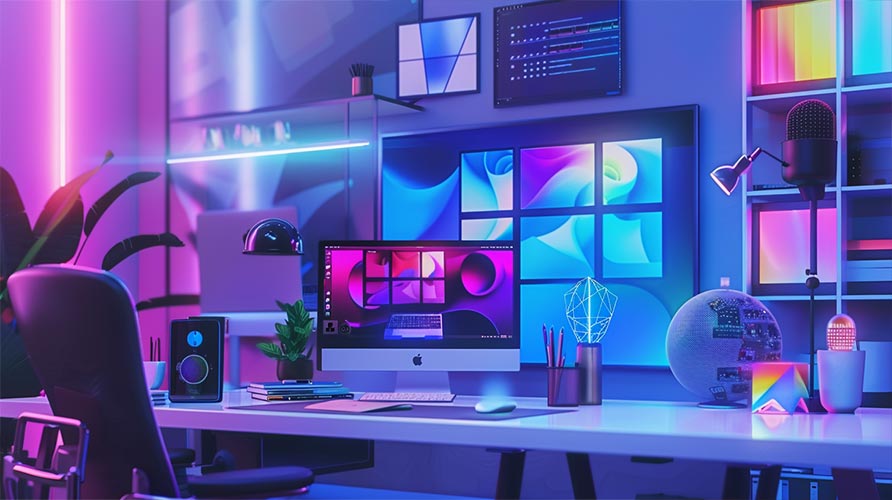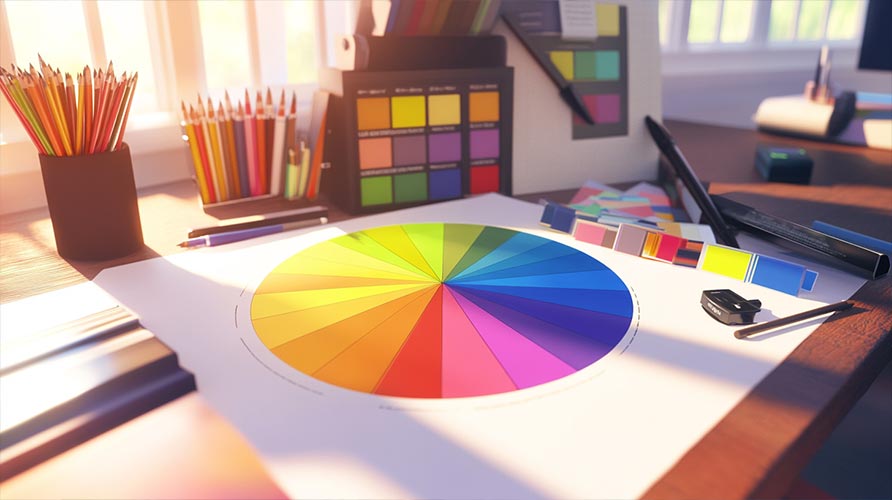Artificial intelligence is revolutionizing the graphic design industry, transforming workflows, enhancing creativity, and democratizing design capabilities. From automating routine tasks to generating creative concepts, AI tools are becoming indispensable for designers at all levels. This article explores how AI is reshaping graphic design and what it means for the future of the profession.
Automating Routine Design Tasks
One of the most immediate impacts of AI in graphic design is the automation of time-consuming, repetitive tasks that previously required significant manual effort.
Image Editing and Enhancement
AI-powered tools can now automatically:
- Remove backgrounds from images with remarkable precision
- Enhance photo quality and resolution
- Correct lighting and color balance
- Retouch portraits with natural-looking results
These capabilities allow designers to focus on creative decisions rather than technical execution, significantly speeding up workflows.
Layout Generation and Optimization
AI systems can analyze design principles and user behavior to:
- Generate multiple layout options based on content requirements
- Optimize layouts for different screen sizes and devices
- Suggest improvements for visual hierarchy and readability
- Automatically resize designs for different platforms and formats
AI-Powered Color Intelligence
Color selection and management is an area where AI excels, offering capabilities that extend beyond human perception.
Advanced Color Extraction and Analysis
Tools like ColorTouch AI can:
- Extract precise color palettes from any visual reference
- Identify primary, secondary, and accent colors in complex images
- Analyze color relationships and hierarchies in existing designs
- Detect subtle color patterns that might be missed by the human eye
Intelligent Color Recommendations
AI can provide data-driven color suggestions by:
- Generating harmonious color palettes based on color theory principles
- Recommending colors that align with brand guidelines and target emotions
- Suggesting accessible color combinations that meet WCAG standards
- Predicting color trends based on analysis of design databases
Generative Design and Creative Assistance
Perhaps the most transformative aspect of AI in design is its ability to generate creative content and serve as a collaborative partner in the creative process.
AI-Generated Visual Assets
Modern AI systems can now:
- Generate original images from text descriptions
- Create variations of existing designs with specific parameters
- Design logos and icons based on style preferences
- Generate patterns, textures, and backgrounds on demand
Creative Exploration and Ideation
AI tools can help designers explore creative possibilities by:
- Suggesting multiple design directions based on initial concepts
- Visualizing abstract ideas quickly for client presentations
- Generating mood boards from text descriptions
- Offering alternative approaches when designers face creative blocks
"AI isn't replacing creativity—it's amplifying it. The tools allow designers to explore more possibilities in less time, pushing creative boundaries further than ever before."
Personalization at Scale
AI enables unprecedented levels of design personalization that would be impossible to achieve manually.
Dynamic Content Adaptation
AI systems can:
- Automatically adapt designs for different user demographics
- Generate personalized visual content based on user data
- Optimize designs for individual user preferences and behaviors
- Create thousands of variations of a design for targeted marketing
Real-time Design Optimization
AI can continuously improve designs through:
- A/B testing different design elements automatically
- Analyzing user engagement and adjusting designs accordingly
- Learning from user interactions to refine future designs
- Adapting to changing trends and user expectations
Democratizing Design Capabilities
AI is making sophisticated design capabilities accessible to non-designers, changing who can create visual content.
No-Code Design Tools
AI-powered platforms now enable:
- Non-designers to create professional-looking graphics
- Small businesses to develop brand assets without hiring specialists
- Content creators to produce visually consistent materials
- Marketing teams to iterate designs quickly without technical skills
Design Education and Skill Development
AI is also transforming how design skills are acquired:
- Providing real-time feedback on design decisions
- Offering contextual learning about design principles
- Suggesting improvements with educational explanations
- Allowing beginners to create sophisticated designs while learning
The Evolving Role of Designers
As AI takes over certain aspects of design work, the role of human designers is evolving rather than disappearing.
From Execution to Direction
Designers are increasingly:
- Focusing on strategic thinking and creative direction
- Curating and refining AI-generated options
- Defining parameters and constraints for AI systems
- Bringing human judgment and emotional intelligence to the process
New Specialized Skills
The AI era is creating demand for new design specializations:
- Prompt engineering for optimal AI-generated results
- AI training and fine-tuning for specific design styles
- Human-AI collaborative workflows
- Ethical oversight of AI design systems
Ethical Considerations and Challenges
The rise of AI in design brings important ethical questions that the industry must address.
Originality and Copyright
Key concerns include:
- Determining ownership of AI-generated designs
- Addressing potential copyright infringement in training data
- Maintaining creative authenticity in an AI-assisted world
- Properly attributing and compensating human creators
Bias and Representation
AI systems can perpetuate or amplify biases:
- Ensuring diverse representation in AI-generated imagery
- Addressing algorithmic biases in design recommendations
- Creating inclusive design tools that work for all users
- Avoiding reinforcement of harmful stereotypes
The Future of AI in Graphic Design
Looking ahead, we can anticipate several developments in how AI will continue to transform graphic design.
Multimodal Design Systems
Future AI design tools will likely:
- Integrate text, image, video, and interactive elements seamlessly
- Generate complete brand identities from simple descriptions
- Create cohesive design systems across all touchpoints
- Adapt designs dynamically across different media and contexts
Collaborative Intelligence
The most promising future lies in human-AI collaboration:
- AI systems that learn individual designers' styles and preferences
- Tools that adapt to specific project requirements and constraints
- Interfaces that feel like creative partners rather than just tools
- Systems that enhance human creativity rather than replacing it
Conclusion
AI is not replacing graphic designers but transforming how they work and what they can achieve. By automating routine tasks, enhancing creative capabilities, and enabling personalization at scale, AI is allowing designers to focus on higher-level creative thinking and strategic design decisions.
The most successful designers of the future will be those who embrace AI as a powerful collaborator, learning to direct these tools effectively while bringing uniquely human qualities—empathy, cultural understanding, ethical judgment, and creative vision—to the design process.
As tools like ColorTouch AI continue to evolve, they will become increasingly valuable partners in the creative process, helping designers extract and work with color in ways that were previously impossible, while leaving the most meaningful creative decisions in human hands.



